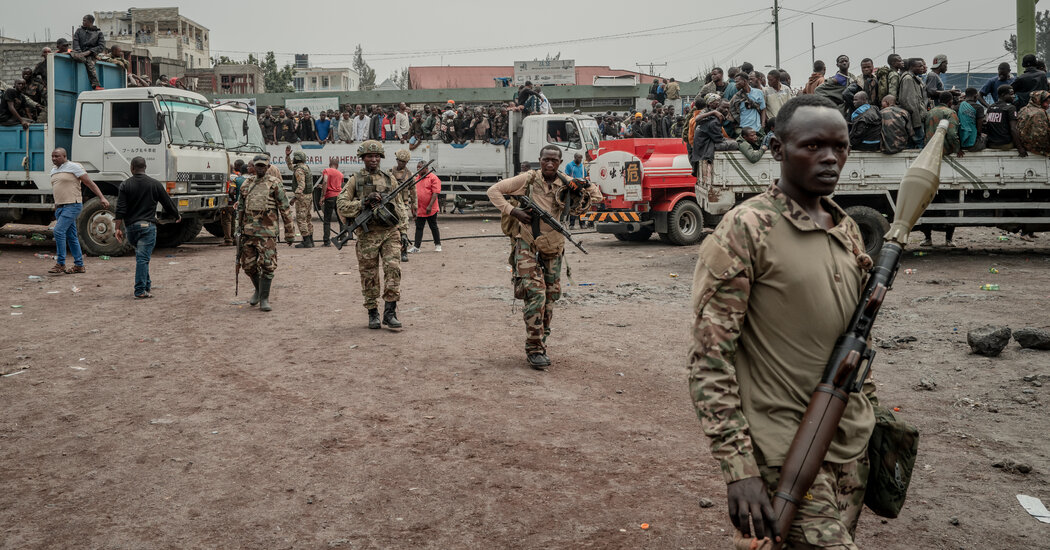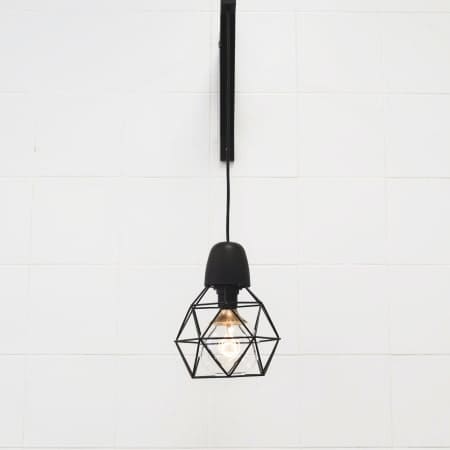
Then a past of preventing, rebels sponsored via Rwanda have wrested virtually complete regulate over Goma, a town of 2 million within the jap Democratic Republic of Congo.
Hospitals are overflowing with the wounded, and the town morgue with the lifeless. Goma’s citizens are starting to emerge from their hiding playgrounds, desperately on the lookout for H2O and meals. And the Congolese army that was once meant to give protection to them has been vanquished.
On Thursday, in a backyard out of doors Goma’s greatest stadium, rebels with the Rwanda-backed M23 defense force loaded greater than 1,000 infantrymen that they had captured into truck beds, the place the lads stood packed in combination. Maximum wore the uniforms they have been captured in. Lots of them have been enraged.
However the curses they spat weren’t directed at their captors; instead, at Felix Tshisekedi, the Congolese president, whom they accused of promoting them out, and on the army commanders who had unwanted them. Their commanders, in conjunction with govt officers, had left at the back of their cars, detectable in movies and pictures, and enroute boats within the early hours of Monday morning as M23 arrived within the town, escaping throughout a moonlit puddle age depart their males to battle isolated.
Most of the infantrymen within the vans had fought on, along armed teams recognized in the community because the Wazalendo. However disagree reinforcements have been despatched.
“Tshisekedi will pay for this,” one soldier shouted.
“We’ll capture him with our own hands,” any other stated.
“God will pay him back,” yelled any other.
A commander of the 231st infantry battalion of the Congolese Military — recognized via its French acronym, F.A.R.D.C. — climbed unwell from the cabin of one of the crucial vans, the place his seniority had earned him a comfy spot. The captured commander, Lt. Col. John Asegi, defined that that they had disagree selection however to give up. M23 was once taking them someplace to offer them some coaching, he stated, including that they might now do no matter their unused masters commanded.
“If we are sent to fight the F.A.R.D.C.,” he stated, “we will fight the F.A.R.D.C.”
Because the M23 rebels strode across the backyard making ready for the vans’ leaving, they regarded extra like a military with their rocket-propelled grenades, fatigues and helmets, age the Congolese infantrymen appeared like a drained, ragtag rise up crew.
The rebels, who already regulate gigantic tracts of mineral-rich Congo, have stated they plan to march to the capital, Kinshasa, just about 1000 miles to the west, and enter the the entire nation.
The rebels had already passed over to Rwanda loads of captured Romanian mercenaries who have been preventing along Congolese forces.
Loads of civilians stood across the vans filled with infantrymen, observing this reversal of roles, and getting a excellent have a look at the lads who have been now in fee. A lot girls and kids have been crying inconsolably, having simply noticed their husbands and fathers a number of the males within the vans.
“I don’t know where they’re taking him to,” wept Marie Sifa, who had a toddler lady on her again and 3 alternative youngsters in tow. She was once from Fizi, 270 miles south of Goma, she stated, and he or she misplaced the whole lot within the assault on Minova endmost past. They sought refuge in a college, however they may no longer keep.
“We have been chased out of the school,” Ms. Sifa stated, crying as though she have been in mourning. “How will I survive? How will I get these children back to Fizi?”
Then on Thursday, a rise up chief, Corneille Nangaa, gave Goma’s electorate a style in their unused fact beneath the tough defense force — which some professionals say counts 6,000 troops in jap Congo, sponsored via as much as 4,000 Rwandan troops.
“Go back to normal activities,” Mr. Nangaa advised Goma’s citizens at a two-hour information convention at an area lodge. He was once flanked via males in helmets and fight equipment.
However the condition in Goma, a town constructed round dark lava streams from a close-by are living volcano, is a ways from standard.
Lifeless our bodies lie within the streets. Retail outlets, supermarkets, and humanitarian businesses’ warehouses had been looted. Cholera is breaking out. Society with bullet wounds — those that survived — are after all managing to get to clinics for remedy, simplest to discover a inadequency of drugs and of surgical personnel.
And plenty of households who have been break up as they fled haven’t begun to search out each and every alternative.
Elysée Mopanda misplaced observe of her two youngsters within the chaos. The rebels have been protecting her husband, a soldier, prisoner. The occasions of the future past had left her public in ruins.
“I don’t know where to go,” she stated.
Wounded, harrowed, hungry, thirsty or misplaced, a lot of Goma’s citizens are in an especially precarious condition.
Maximum inclined is Goma’s displaced folk, which numbers within the loads of 1000’s.
For greater than a 12 months, public have fled the rise up exit via jap Congo’s nation-state and mini cities, searching for shelter in and round Goma, in sprawling, unsanitary camps which might be specifically bad for girls and women.
As M23 closed in on those camps endmost past, 1000’s of public who have been slightly surviving there fled the clashes, sporting the slight that they had on their heads towards Goma, which might itself quickly be overtaken.
3 households who fled one of the crucial camps simply out of doors Goma concealed in an academic middle, surviving on some beans and rice they got.
With out that esteem, “I don’t know how we would have survived,” stated Furaha Kabasele, a 34-year-old mom whose youngest kid is simplest 5 months aging.
They did live on this perilous past. However they do not know what they’re going to do now.
For lots of, probably the most urgent want is H2O. Town’s H2O provide, in addition to its energy and web, was once scale down throughout the fight for Goma, and people who had controlled to avoid wasting watched it dwindle over the past. Those that had disagree H2O attempted to beg it from those that did, or paid a hawker up to $5.20 for a jerrycan that generally prices 20 cents.
Because the preventing subsided, loads of public have ventured to the brink of Pool Kivu to bind H2O, including a slight chlorine to attempt to stock waterborne sicknesses at bay.
A type of fetching H2O on Thursday morning was once Tailor Mukendi, 13, who carried two stained yellow jerrycans to the lakeshore, took off his flip-flops, and plunged into the shimmering puddle. Because the preventing blazed, his public had trample over of H2O to drink.
“We couldn’t leave the house because of the gunshots and the bombs falling,” he stated.
He crammed the cans, and struggled to lug them out of the puddle.










